
Blood trickles down Cecil’s face.
A tranquilliser dart has pierced his rough, leathery skin above the ear. Just steps away, his sedated mother has collapsed. Paulina’s hind foot was lassoed with a rope and she was blindfolded. A group of men and women tug on the rope and rock her large, round frame, trying to get her up and into a metal crate.
“1, 2, 3 Push!” someone commands. “1, 2, 3 Push!”
Then, they plunge a cattle prod under Paulina’s bottom. The crackle of electricity flows through her body. She staggers up, then falls again.
Five other endangered black rhinos are undergoing different stages of the same treatment. To an outsider, it seems cruel. But to the team of animal conservationists corralling the rhinos, the tactics are vital to keeping them alive.
Rhino poaching is on the rise again in South Africa, feeding appetites in Asia and the Middle East, where rhino horns are often used in traditional medicines or as cultural artefacts. South African and Asian governments, as well as Interpol, have struggled for decades to curb this illicit global trade, where each horn can fetch tens of thousands of pounds.
Now, animal conservationists are trying to save South Africa’s rhinos by moving them out of threatened areas and into new habitats with strong security and strategic conservation methods. The hope is that this will allow the rhinos to seed large breeding herds, protecting the species for future generations.
Some are being sent to neighbouring countries such as Mozambique – part of an extraordinary, Noah’s ark-like effort to create cross-border sanctuaries, repopulate depleted national parks, and restore ecosystems that can fight climate change and attract tourists.
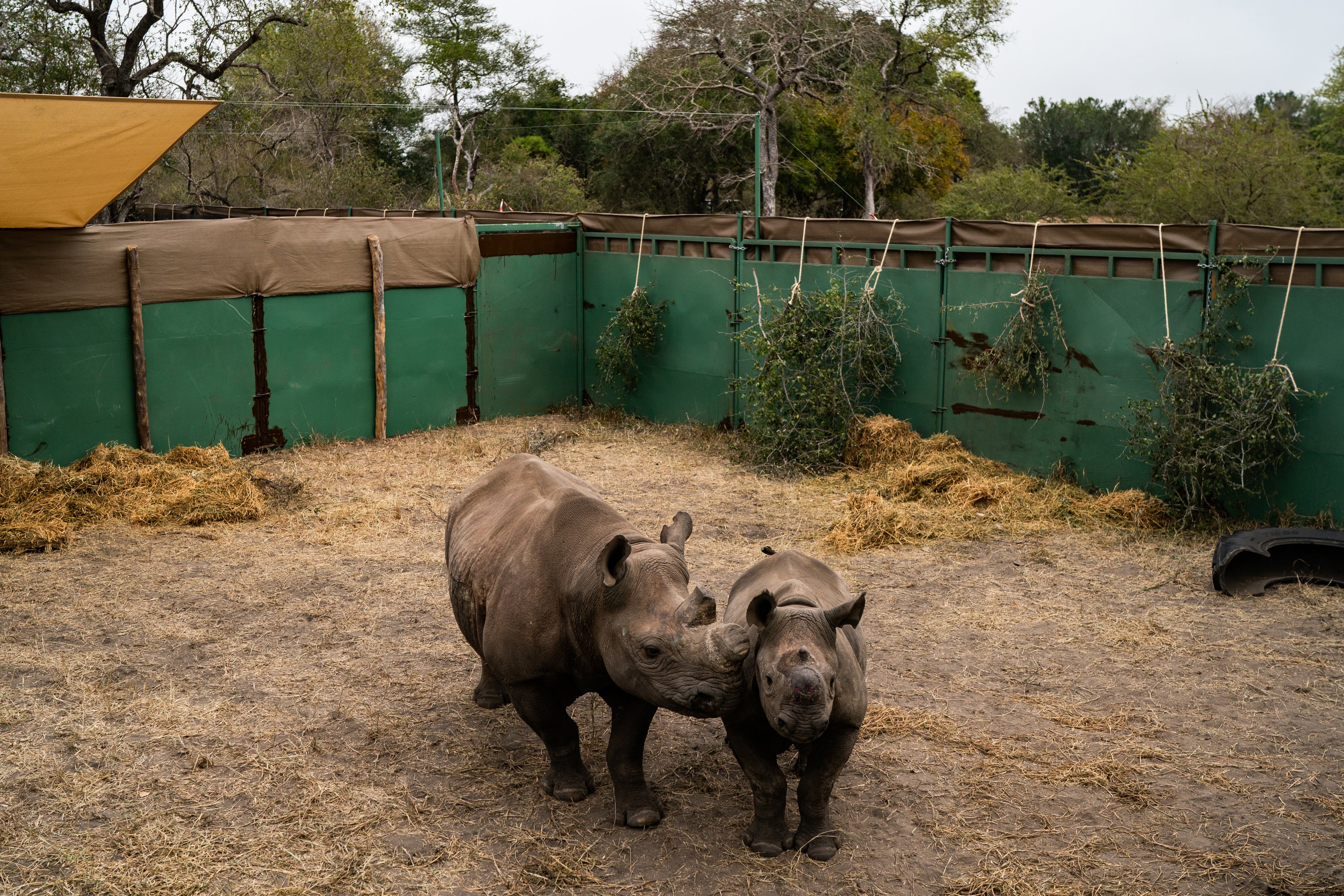
“They can’t really look after the rhino here, no matter the resources they have,” says Werner Myburgh, the head of the Peace Parks Foundation, a conservation nonprofit, referring to the reserve where Paulina, Cecil and dozens of black and white rhinos have lived for years. “So you have to move the rhinos, or else you will lose all of them eventually.”
“You give them a new lease on life,” he adds.
That’s why on a recent morning, a group of eight rhinos – seven black and one white – embarked on a roughly 1,000-mile journey from their nature preserve in northeastern South Africa to a sanctuary in southern Mozambique’s Zinave National Park. The last time black rhinos roamed in the park was 40 years ago, before a 15-year civil war decimated its wildlife.
Taking the animals there would mean nearly two days of travel, most of it along unforgiving terrain.
Those leading the convoy are nervous: would poachers attack, hoping to seize nearly $500,000 worth of rhino horns? What would happen if the truck broke down in an isolated stretch of the Mozambican forest? Would all the sedated rhinos drink enough water to survive the bumpy journey in crates the size of a small walk-in closet?
“We are pushing the limits,” says Kester Vickery, the main architect of the journey. “Our biggest challenge is fighting time.”
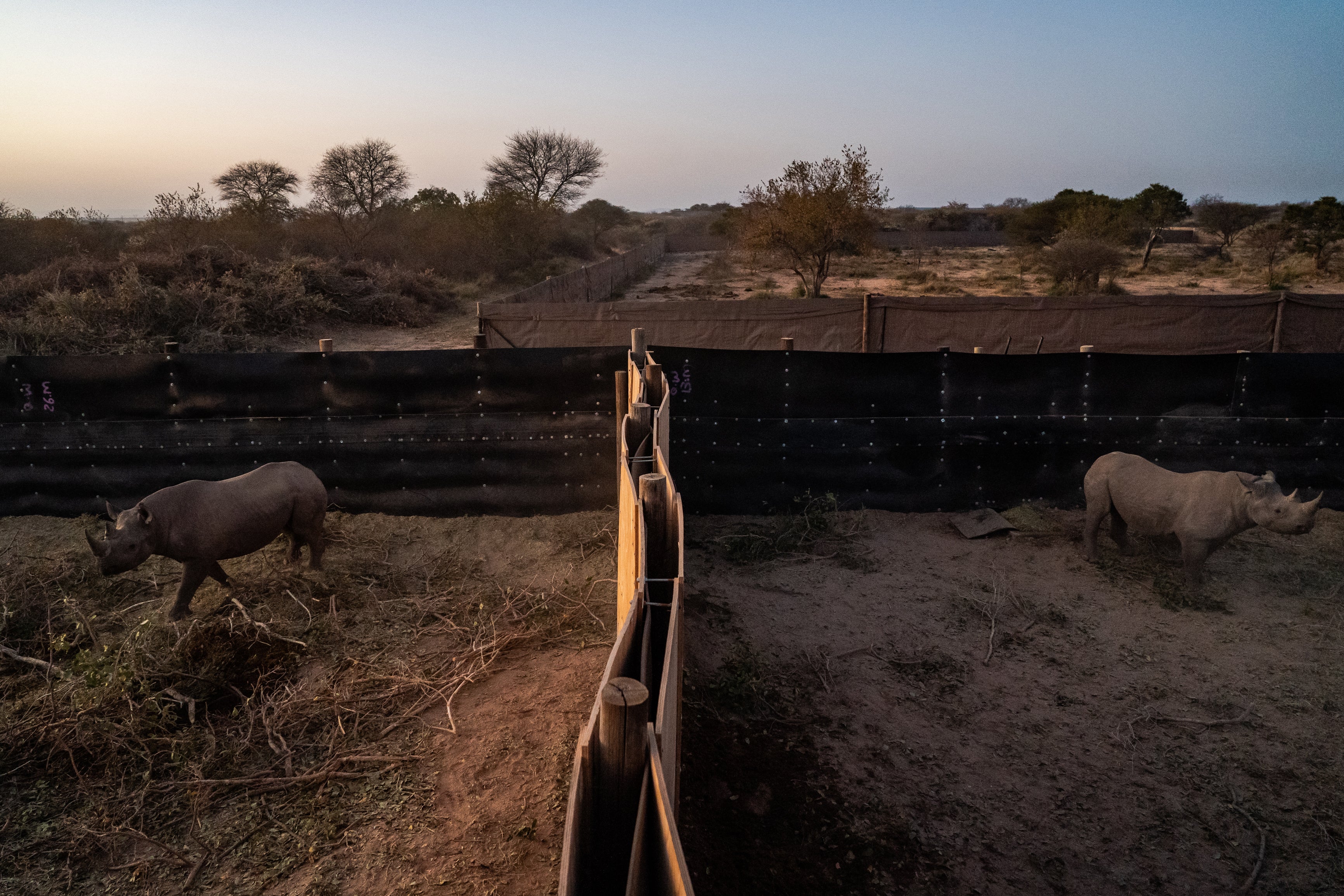
A few moments later, he adds: “I don’t want to lose a rhino on our watch.”
Earlier that morning, in the cold predawn hours, the rhinos were inside their compounds, known as bomas. Some of the animals were restless, running and snorting, sensing something was afoot. Cecil stood next to Paulina, following her wherever she went.
The animals lived in the Manketti reserve, owned by Exxaro, South Africa’s largest coal producer, which is also involved in animal conservation. Protecting the rhinos from poachers has always been a challenge there: 4,500 miners work inside the reserve; local communities live on its borders; and a public road runs through the park’s 54,000 acres. During the pandemic, Manketti lost valuable tourist revenue, hurting funding for security and park maintenance.
Poachers have killed 12 rhinos here in the past six years, including three in a single attack last year. “This whole area is hammered by rhino poaching right now,” says Marius Fuls, the reserve’s manager. “We cannot restrict access like other game reserves.”
Over the past 14 years, poachers have killed about 11,000 rhinos in Africa, according to conservation groups, more than 9,000 of them in South Africa, home to the majority of the world’s rhinos. The poaching started to soar in 2008, peaking at 1,349 rhinos killed in 2015, before decreasing due to dwindling populations, better prevention systems and stronger regional alliances.
Now, incidents are ticking up again. According to South African government data, 451 rhinos were killed last year, a 13 per cent spike from 2020 when pandemic lockdowns thwarted criminal syndicates. About 249 rhinos have already been killed in the first six months of this year, 10 more than during the same period in 2021.
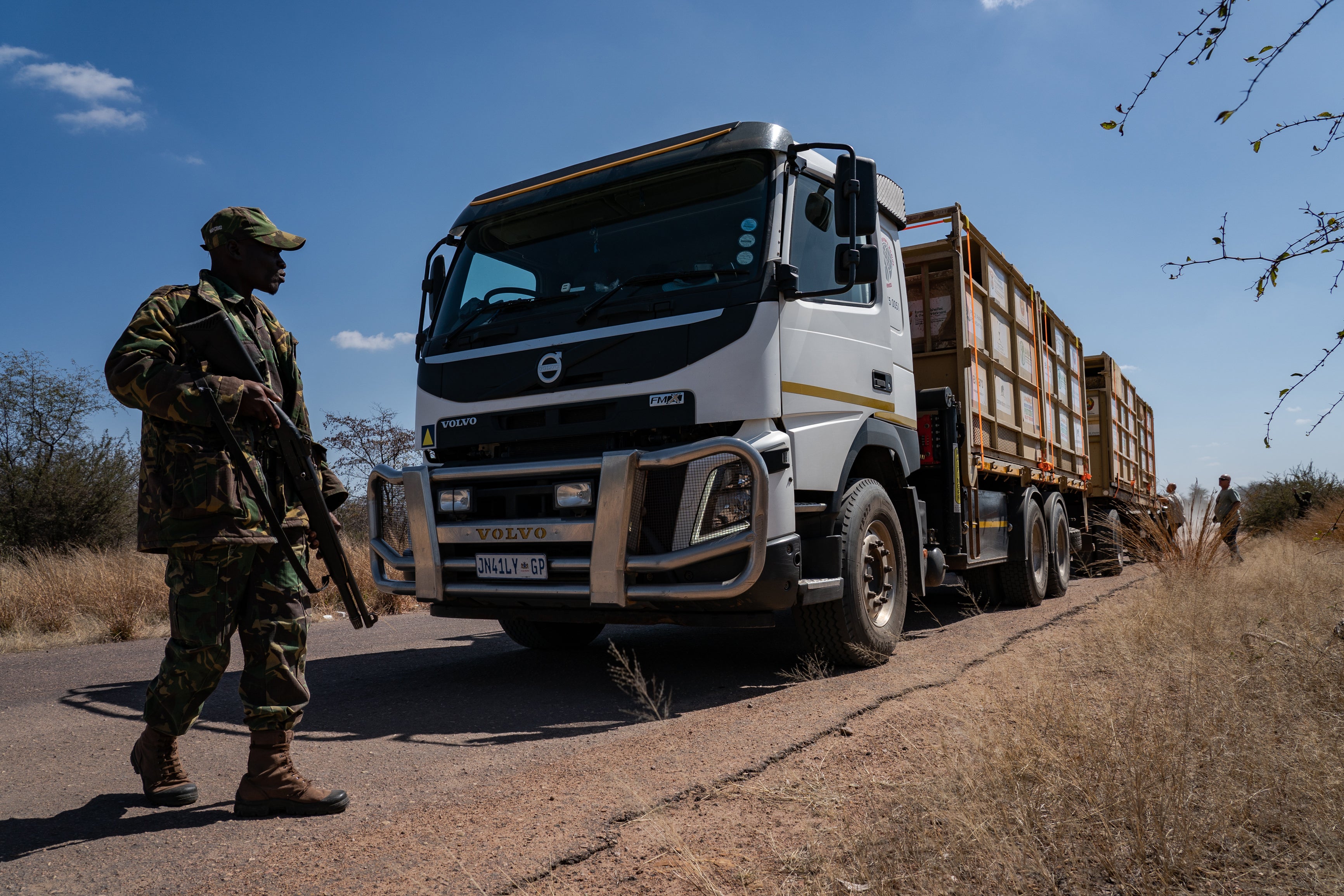
Today, roughly 2,000 black rhinos and 15,000 white rhinos are left in South Africa. Larger parks have invested in electronic tracking surveillance and armies of anti-poaching rangers, and have even started sawing off rhino horns to deter poachers. Exxaro decided on a different strategy, donating and moving all 41 of its rhinos – 30 white and 11 black – to Zinave, where they felt the animals would be safer.
“The cost-to-benefit equation doesn’t make sense anymore,” Fuls says.
With South African government approval, the move was organised by the Peace Parks Foundation, a nonprofit supported by US and European governments. The group has transported 17,000 animals over the past two decades, ranging from antelopes to elephants, to “rewild” depleted national parks in Zambia, Malawi, Zimbabwe and Mozambique.
Animal conservationists see reviving these ecosystems as part of a larger mission to combat poverty, prevent mass extinctions and battle climate change.
In May, the first 19 white rhinos were transported by road from Manketti to Zinave, which is part of a larger conservation area stretching 62,000 sq miles across a series of parks in Mozambique, South Africa and Zimbabwe.
Now, it was the black rhinos’ turn.
As the sun bathes the bomas in a golden hue, veterinarian Peter Rogers stands atop the platform and shoots a tranquilliser dart into a black rhino. The animal runs, then staggers toward the fence, slowly succumbing to the drugs.
As the rhino’s legs buckle, Rogers and his team enter the boma. They tie ropes around the animal’s snout and hind leg, then wrap a blindfold around its eyes – to prevent one of the world’s most dangerous animals from stampeding.
Vickery uses a cattle prod to get the rhino to stand up.
The goal was to insert a transmitter and microchip in the rhino’s horn so conservationists can track it in Mozambique. Then, the animal is “walked” into a crate for the journey ahead.
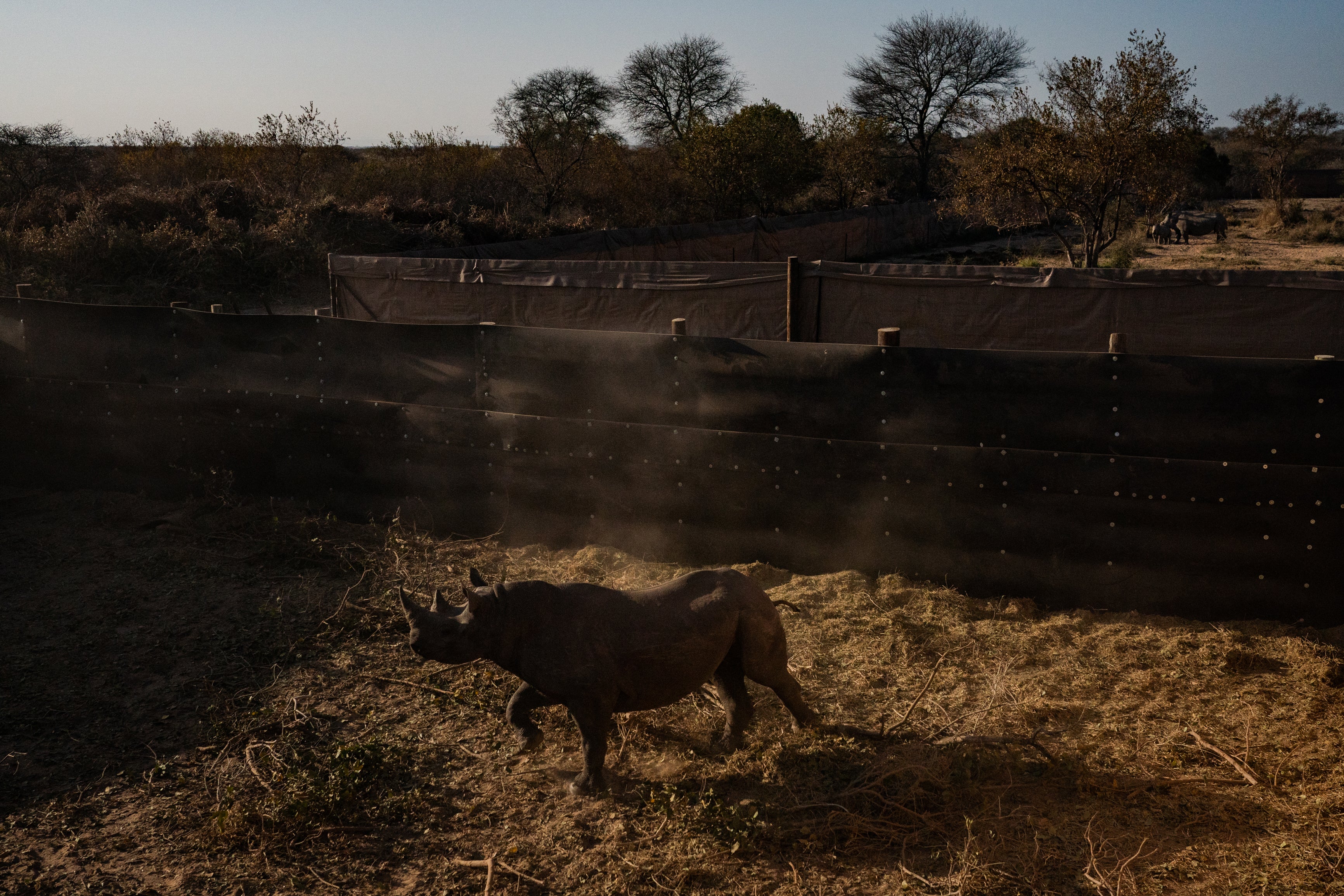
Paulina and Cecil are the last ones to go through this ritual. Cecil is swiftly subdued and placed into the crate, blood still trickling down his face. Paulina is more stubborn.
As they hold her down, one team member revs up a buzz saw, and after glueing the transmitter and microchip, saws off what remained of Paulina’s long horn. The other rhinos had their horns sawed off as well.
The horns, like fingernails, would grow back in a few months. But removing them now causes the rhinos no pain, and means the animals wouldn’t harm themselves inside the crates during the journey.
Less than an hour later, all eight crates had been loaded onto the bed of the large truck.
Only four black rhinos and 10 white rhinos remained in the park. In a few months, they too are scheduled to be taken to Mozambique.
“It’s sad to see them leave, but they and their species will have a better chance of survival,” says Siviwe Kweba, 30, one of the park’s rangers. “That’s how we console ourselves.”
At 10am, the convoy pushes off toward the Mozambique border, roughly 300 miles away.
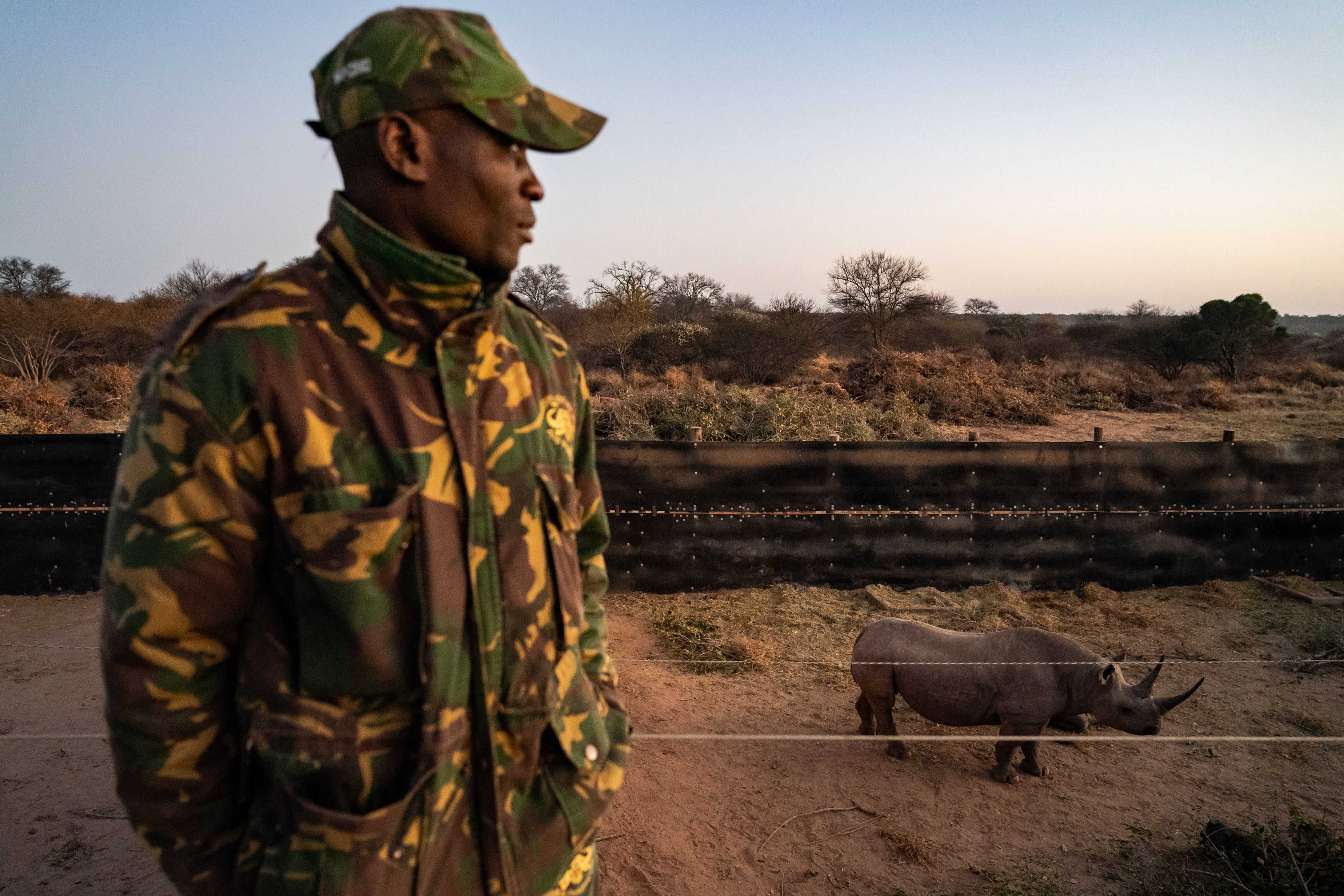
An hour into the journey, the convoy stops. Rogers and another veterinarian, Shaun Roper, get out. They can hear at least two rhinos banging against the crate.
“This one is a little jumpy,” says Rogers.
Roper gets on top, clutching a syringe. He opens the hatch, leans in, and administers a tranquilliser.
Four anti-poaching rangers trailing the convoy in a pickup truck also get out. They place themselves on either end of the caravan, AK-47 rifles slung over their shoulders. Another walks along the road, watching for suspicious activity. The rhinos’ horns were sawed off, but poachers didn’t know that.
“It’s a soft, easy target,” says a member of the anti-poaching team, speaking on the condition of anonymity because of security concerns. “They are quite a cash cow for a well-organised group. And there are many well-organised groups here.”
Four hours later, as darkness sets in, the truck breaks down. They are still roughly 25 miles outside the city of Mbombela.
One of the rhinos starts to bang against the crate, bored and restless. Roper gives him a small dose of tranquilliser and he begins to calm down. Without being sedated, the rhinos could have easily crashed through their crates.
Thankfully, the team has a backup plan.
The rhinos are towed to a parking lot on the outskirts of Nelspruit, where the trailer carrying the animals is unhooked and attached to a second truck.
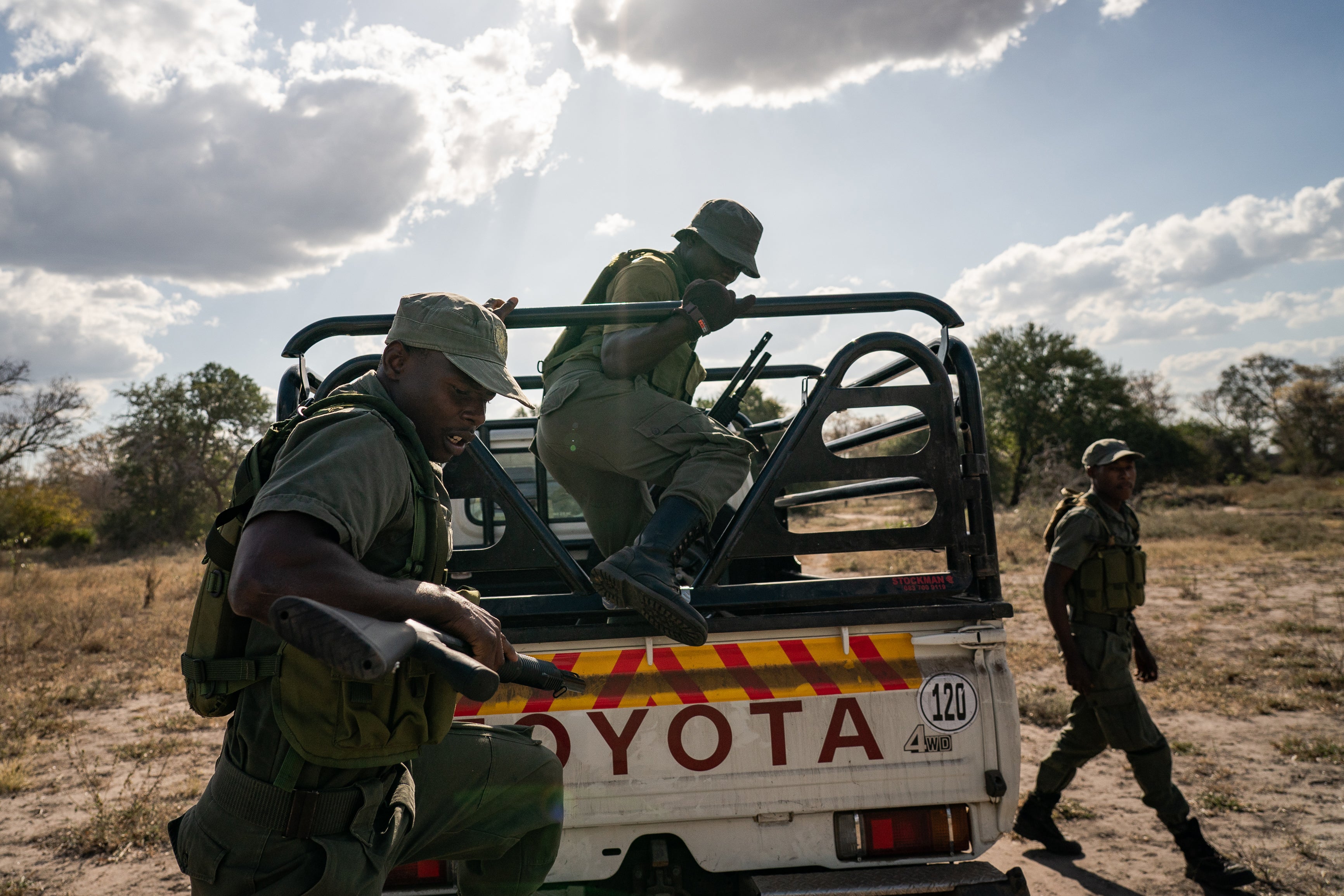
The convoy reaches the Lebombo border crossing at about 4 the next morning. A South African police escort takes them through border control, bypassing a long line of trucks.
On the other side, Mozambican security forces are waiting to escort the rhinos to Zinave, sirens flashing.
The unpaved roads to the park are much rougher and slower – along one stretch it would take 10 hours to go just 140 miles. The rhinos are agitated by the constant shaking. Any breakdown could take days to fix.
“It’s a constant race against time,” says Fuls.
Halfway into the journey, two tires blow out at the same time. The driver scramble to fix them. While they wait, Fuls and his team feed the rhinos some water and high-protein camel thorn tree pods to “give them the last bit of energy” to reach the park.
Nearly 40 hours after leaving South Africa, the convoy arrives in the early morning hours of Wednesday. All the animals had lost weight.
Fuls breathes a sigh of relief. “The rhinos were quite calm, but really tired,” he says.
Eight years ago, Zinave National Park was so silent that not even the sound of chirping birds could be heard. During Mozambique’s civil war, from 1977 to 1992, the area was both a hunting ground and a battlefield. The animals vanished.
Since 2015, the Peace Parks Foundation has brought in about 2,400 animals, rebuilding the park from scratch, erecting radio towers, fences and roads. The rhinos were the 14th species, increasing the biodiversity. Today, there are about 6,000 animals.
Rhinos are a keystone species, which means they help hold an ecosystem together. White rhinos restore grasslands as they graze, and black rhinos eat specific plants that act as a natural fertiliser when cycled back into the earth as waste.
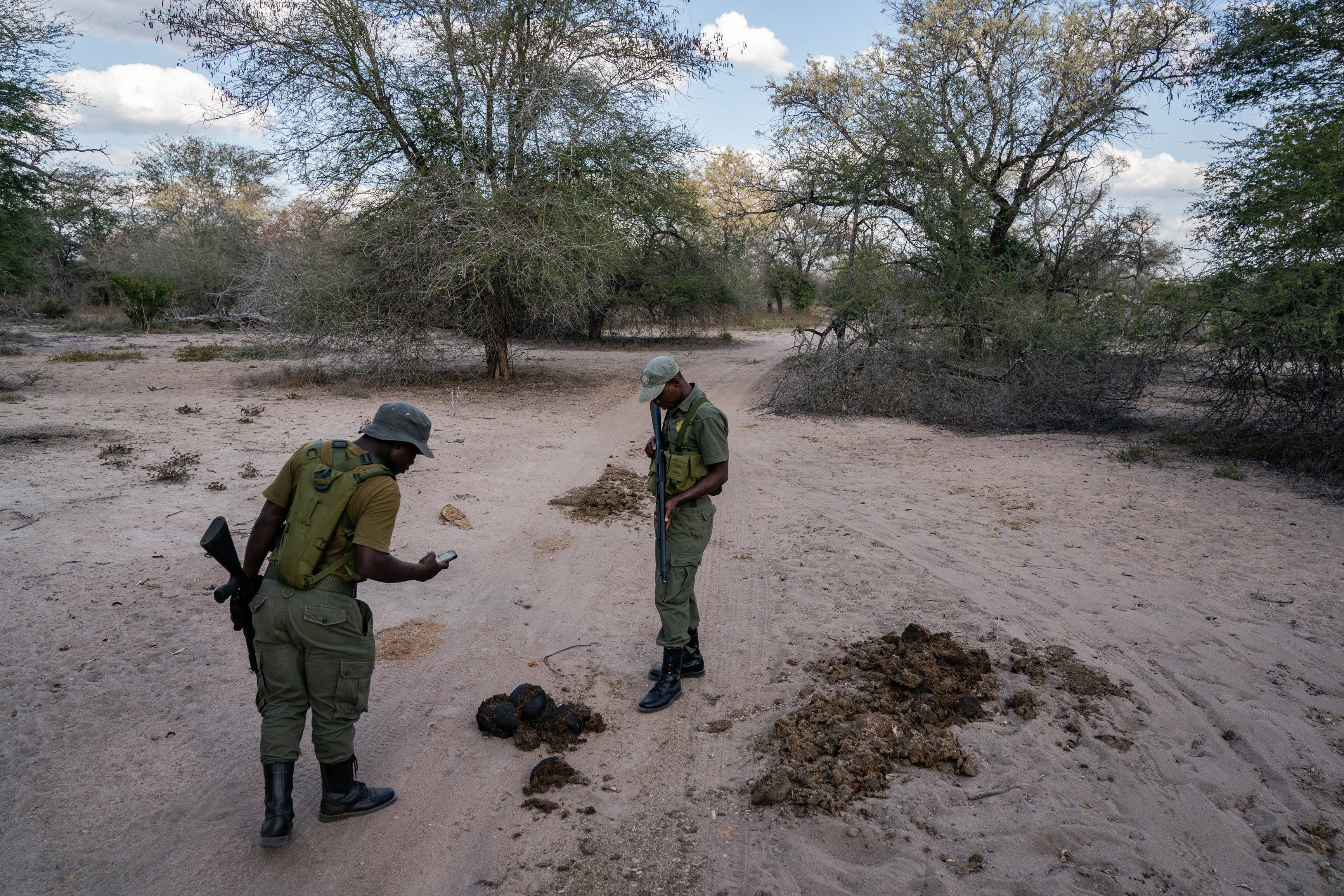
“The black rhino plays their own unique role getting the whole ecosystem functioning properly again,” says Bernard van Lente, the park’s project manager. “We’re stimulating diversity and so plants grow more vigorously, which is a key element to prevent climate change.”
For the first time, Mozambique has the so-called Big Five – rhinos, lions, elephants, leopards and buffalo. Already, one of the 19 white rhinos has given birth.
“It’s important for the economy of the country,” says Sansao Mabulanbe, head of the park’s protection service. “There will be a lot of people coming here to see the black rhino.”
“But it’s a challenge,” he concedes. “We have to do our best to protect these rhinos.”
While moving rhinos is widely accepted as an important conservation tool, some efforts have failed. In the 1990s, rhinos were moved from South Africa to Botswana, where they were facing extinction, a success story at the time. But scores have been killed there over the past three years as the nation grapples with a surge in poaching.
In Zinave, the rhinos will roam in a fenced-in sanctuary with electronic surveillance, allowing for better monitoring. A 90-strong anti-poaching unit, armed with semiautomatic weapons, patrols the area around-the-clock by foot, truck, and helicopter.
Local communities do not live inside the sanctuary, preventing clashes with humans. Communities nearby are educated in wildlife conservation and given jobs to prevent them from hunting for food.
Yet gangs of poachers have already entered the park to hunt antelopes, says Eduardo Luis, one of the rangers, describing how they ambushed one such group last year.
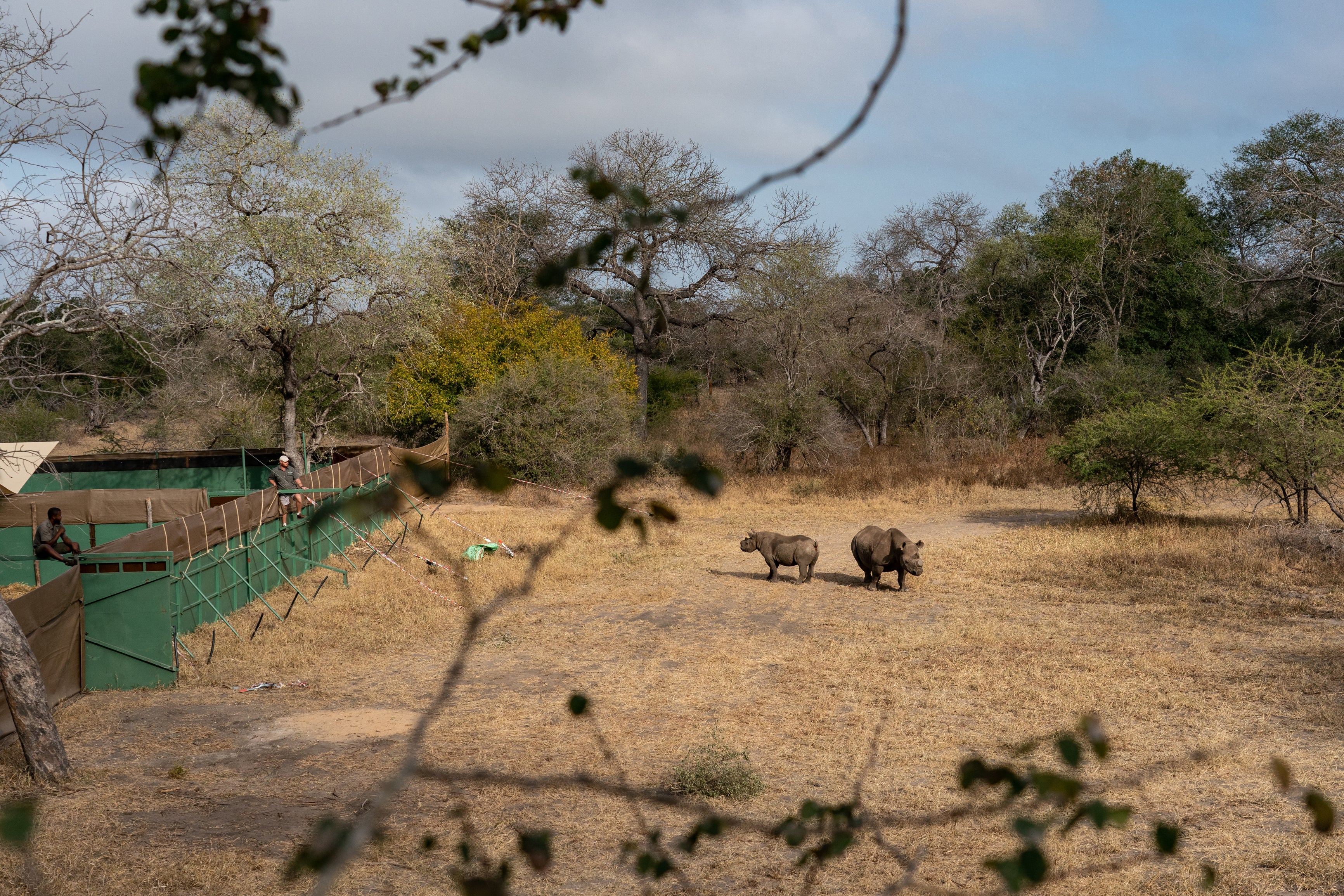
“Soon the poachers will come for the black rhino,” says Luis. “But we have trained heavily on a big level. We can fight the poachers.”
Ultimately, though, the relocations are a stopgap measure, admits Myburgh, from the Peace Parks Foundation. The only way to protect rhinos in the long term is to persuade people to stop buying their horns, he says, pointing to the activism that made furs and pelts unpopular.
“The end game will not be won by doing what we’re doing,” Myburgh says. “We’re just playing for time.”
When the truck arrives, the rhinos are placed into bomas and monitored for their health. They immediately start drinking water, which is a good sign, says Fuls. The next morning, the first batch is released. The others follow the next day.
Pauline and Cecil are the last to be set free.
They come out together. At first, they stay by the doors of their boma, unsure if they’ve been liberated. For 15 minutes, they remain in the area, running here and there, smelling their new home. Then, mother and son run into the African bush and vanish.
© The Washington Post







